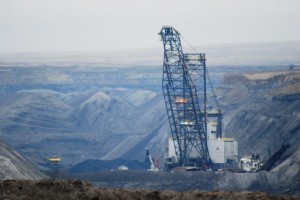One Quarter of Total U.S. Greenhouse Gas Emissions Come From Fossil Fuels
 A new report by Stratus Consulting and commissioned by The Wilderness Society released Friday morning shows that 23 percent of total U.S. greenhouse gas emissions come from oil, gas, and coal extracted from federal lands and waters. As the report states:
A new report by Stratus Consulting and commissioned by The Wilderness Society released Friday morning shows that 23 percent of total U.S. greenhouse gas emissions come from oil, gas, and coal extracted from federal lands and waters. As the report states:In 2009, the most recent year for which total U.S. GHG emissions data are available, the ultimate downstream GHG emissions from fossil fuel extraction from federal lands and waters by private leaseholders could have accounted for approximately 23% of total U.S. GHG emissions and 27% of all energy-related GHG emissions.
The study was commissioned because of deficiencies in the White House Council on Environmental Quality’s first-ever “Greenhouse Gas Emissions Inventory for the Federal Government” report released in April 2011. Under Executive Order 13514, all federal agencies were required to “report and reduce greenhouse gas pollution,” which included items such as energy use, fuel consumed by government fleets, and methane generated by landfill waste.
But, land management agencies like the Interior Department were not required to report emissions from activities that “are under federal agency control but are conducted by private entities,” which includes energy development on public lands. This allowed for CEQ’s analysis to vastly underestimate the emissions coming from the federal government’s activities. As Stratus states: “This analysis suggests that ultimate GHG emissions from fossil fuels extracted from federal lands and waters by private leaseholders in 2010 could be more than 20-times larger than the estimate reported in the CEQ inventory.”
This morning’s report demonstrates that energy development on public lands has major impacts when it comes to climate change. This is because approximately 44% of coal, 36% of crude oil, and 18% of natural gas produced in this country are extracted from public lands, which combined create an astounding amount of carbon released into the atmosphere.
That fact is critically important as our government considers strategies to reduce emissions over the coming years. Federally-managed lands and waters provide a unique opportunity in this process due to their extent and geographic diversity.
This study should serve as an important wake up call for President Obama and the leaders in his administration, both of which have made serious commitments to addressing the climate crisis and making the United States the world leader in clean energy development. Not only has the president pledged to reduce emissions 17 percent below 2005 levels by 2020, but Interior Secretary Ken Salazar stated in Copenhagen that “carbon pollution is putting our world—and our way of life—in peril.”
You can return to the main Market News page, or press the Back button on your browser.

